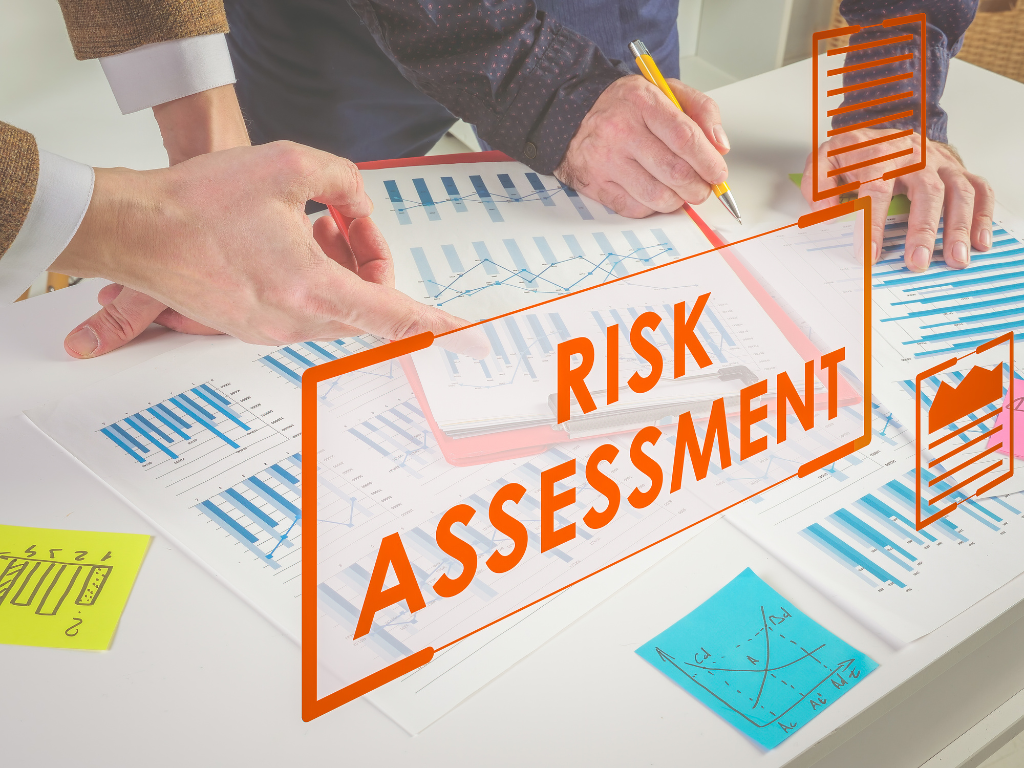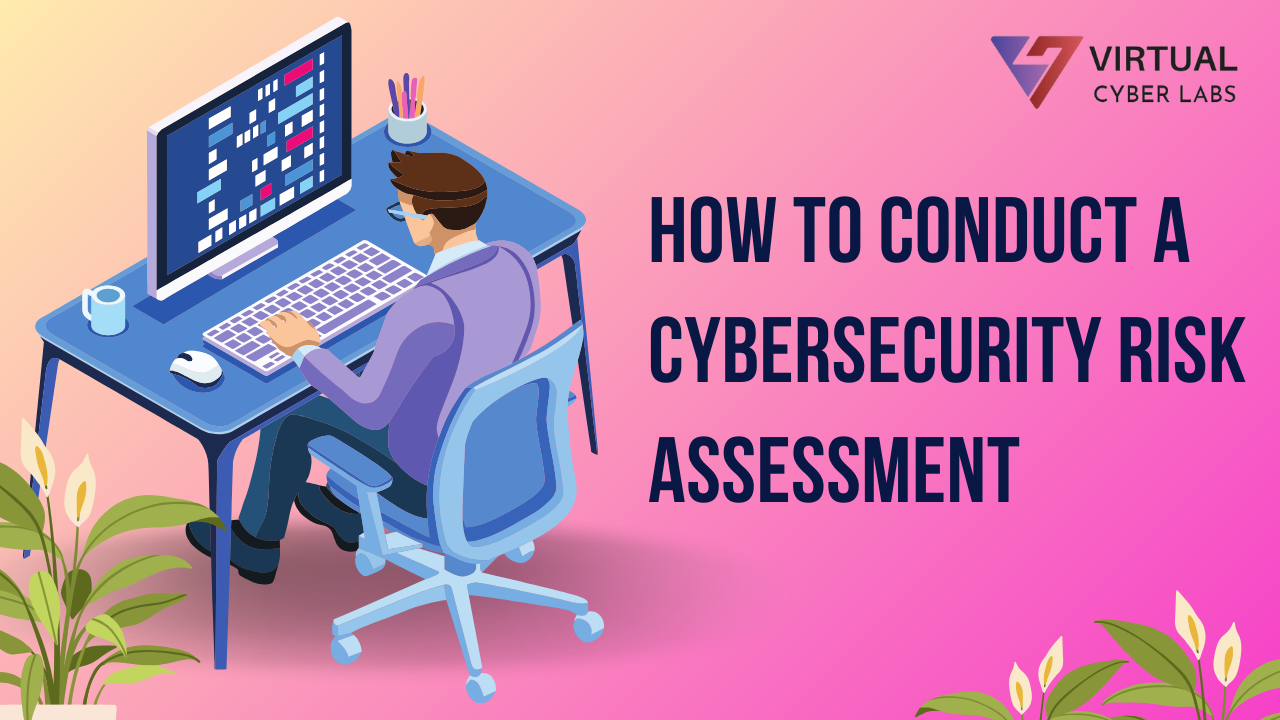10 Ways, How to Conduct a Cybersecurity Risk Assessment
In today’s interconnected world, organizations of all sizes face increasing cybersecurity threats. Conducting a thorough cybersecurity risk assessment is essential for identifying vulnerabilities, understanding potential risks, and implementing measures to safeguard digital assets. A well-executed risk assessment helps organizations comply with regulations, prioritize security investments, and mitigate potential damages from cyber incidents. This guide will walk you through the essential steps for conducting an effective cybersecurity risk assessment.

1. Understand the Importance of Cybersecurity Risk Assessment
A cybersecurity risk assessment identifies, evaluates, and addresses risks associated with an organization’s information systems. Its primary objectives are:
- Identifying Critical Assets: Understanding what needs to be protected, such as sensitive data, intellectual property, or operational systems.
- Understanding Threats and Vulnerabilities: Determining potential threats (e.g., hackers, insider threats, malware) and vulnerabilities (e.g., unpatched systems, weak passwords).
- Prioritizing Risks: Allocating resources effectively to address the most significant risks.
- Ensuring Compliance: Meeting regulatory requirements like GDPR, HIPAA, or ISO 27001.
2. Assemble the Right Team
A cybersecurity risk assessment requires collaboration across departments. Include:
- IT Team: For technical expertise and system analysis.
- Compliance Officers: To ensure adherence to regulations.
- Business Leaders: To align security measures with business goals.
- External Experts: When necessary, bring in cybersecurity consultants for specialized knowledge.
3. Define the Scope and Objectives
Determine the boundaries of your assessment:
- Assets: Identify which assets (hardware, software, data) are within the scope.
- Processes: Include all relevant processes, such as data storage, transmission, and access.
- Stakeholders: Clarify roles and responsibilities.
- Objectives: Specify what the assessment aims to achieve, such as reducing breach likelihood or improving incident response.
4. Identify Assets and Their Value
Creating an inventory of assets is critical:
- Data Assets: Include customer data, intellectual property, and financial records.
- Hardware and Software: Document servers, endpoints, applications, and network devices.
- Human Assets: Identify employees with access to sensitive systems.
Assign value to each asset based on its importance to the organization, considering factors like operational impact, replacement cost, and regulatory implications.
5. Identify Threats and Vulnerabilities
Threat Identification
Threats can arise from various sources:
- External: Hackers, malware, phishing attacks, and nation-state actors.
- Internal: Disgruntled employees, accidental data leaks, or misuse of access privileges.
- Natural Events: Floods, fires, or other disasters impacting infrastructure.
Vulnerability Assessment
Use tools like vulnerability scanners and penetration tests to identify weaknesses in systems. Common vulnerabilities include:
- Outdated software and unpatched systems.
- Weak or reused passwords.
- Misconfigured servers or firewalls.
6. Evaluate Risks
Risk evaluation combines the likelihood of a threat exploiting a vulnerability with the potential impact on the organization. Use a risk matrix to categorize risks into:
- High: Immediate attention needed.
- Medium: Address soon, with monitoring.
- Low: Monitor and address as resources permit.
Example Risk Matrix:
| Likelihood/Impact | Low Impact | Medium Impact | High Impact |
|---|---|---|---|
| Low Likelihood | Low Risk | Low-Medium Risk | Medium Risk |
| Medium Likelihood | Low-Medium Risk | Medium Risk | High Risk |
| High Likelihood | Medium Risk | High Risk | Critical Risk |
7. Develop a Risk Mitigation Plan
For each identified risk, develop a mitigation strategy:
Risk Treatment Options
- Avoidance: Eliminate the risk by discontinuing the activity causing it.
- Mitigation: Reduce the risk by implementing controls (e.g., firewalls, encryption).
- Acceptance: Acknowledge the risk and prepare to handle its consequences.
- Transfer: Shift the risk to a third party, such as purchasing cyber insurance.
Implement Security Controls
- Technical Controls: Firewalls, antivirus, intrusion detection systems (IDS), and regular patch management.
- Administrative Controls: Policies, employee training, and incident response planning.
- Physical Controls: Secure data centers, surveillance, and access restrictions.
8. Document Findings
Comprehensive documentation is vital for transparency, accountability, and compliance. Include:
- Asset Inventory: List of all assets evaluated.
- Risk Register: Detailed record of identified risks, including likelihood and impact.
- Mitigation Measures: Actions taken or planned to address risks.
- Assessment Report: Summarize the process, findings, and recommendations.
9. Monitor and Review
Risk assessments are not one-time activities. Continuously monitor for:
- Emerging Threats: New vulnerabilities or attack techniques.
- Changes in Infrastructure: Updates to systems, software, or business processes.
- Effectiveness of Controls: Regularly test and evaluate implemented measures.
Conduct periodic reassessments to ensure the risk landscape is accurately reflected.
10. Leverage Frameworks and Tools
Use established frameworks and tools to guide your risk assessment:
Frameworks
- NIST Cybersecurity Framework: Provides a structured approach to risk management.
- ISO/IEC 27005: Focuses on information security risk management.
- CIS Controls: Lists prioritized security actions.
Tools
- Vulnerability Scanners: Nessus, OpenVAS.
- Risk Management Tools: Archer, RiskWatch.
- Threat Intelligence Platforms: Recorded Future, ThreatConnect.
Conclusion
Conducting a cybersecurity risk assessment is a critical step in building a robust security posture. By systematically identifying, evaluating, and mitigating risks, organizations can protect their assets, maintain customer trust, and ensure regulatory compliance. Remember, the cybersecurity landscape is ever-evolving, and continuous monitoring and reassessment are essential for staying ahead of potential threats. Implementing a structured approach as outlined in this guide will set your organization on the path to resilience and preparedness.







